Where the Wildwood Tramcar Sleeps – Tour
For generations, the Wildwood Tramcar has been an iconic fixture of the Wildwoods.
With its iconic “Watch The Tramcar Please,” the biggest soundscape of the island, it has become more than just a ride on the boardwalk but a timeless experience woven into the fabric of the community.
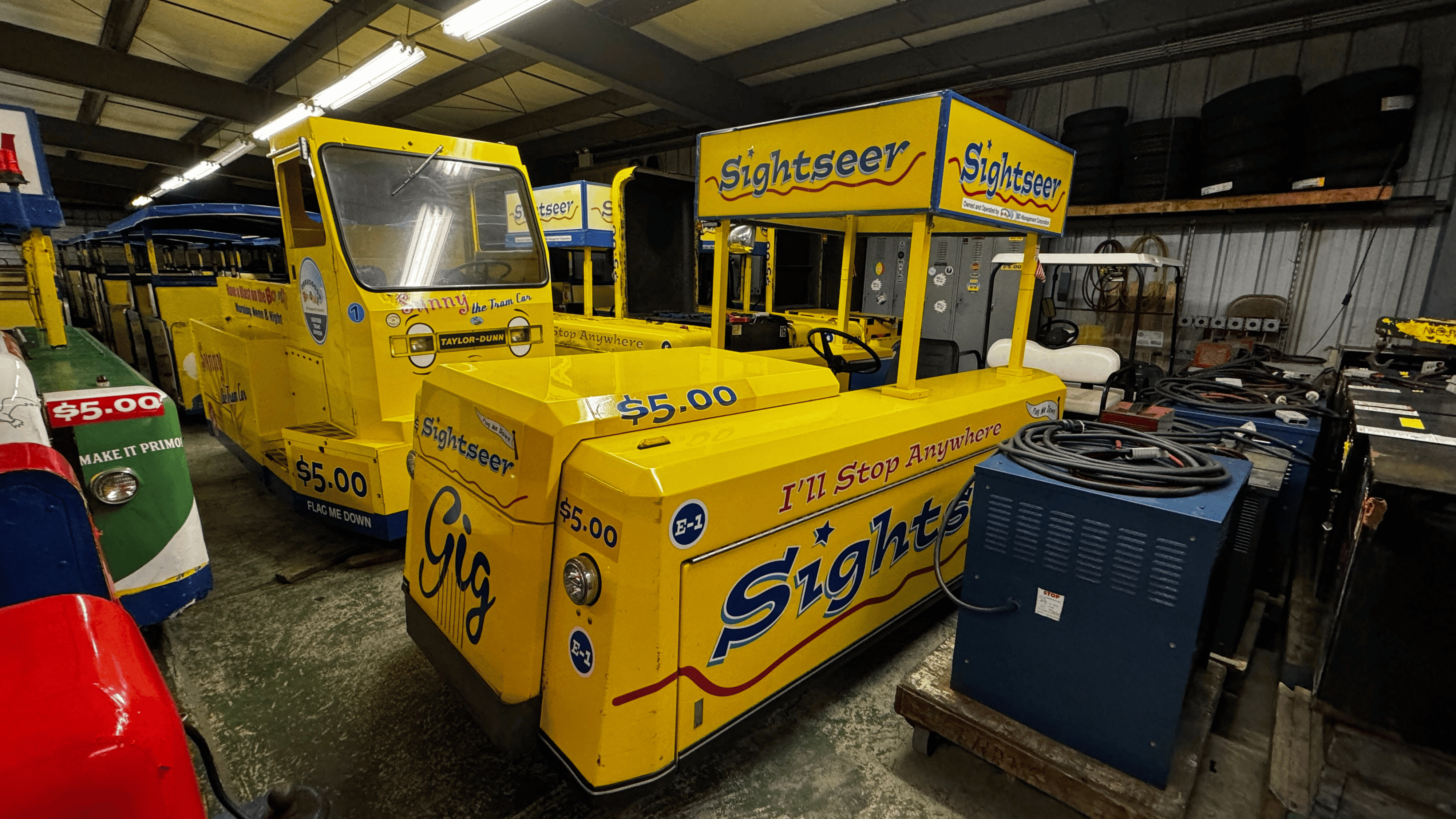
Where the Wildwood Tramcar Sleeps – Tour
The origins of the Tram Car trace back to 1939 when it debuted at the New York World’s Fair. It wasn’t until 1949, however, that Sebastian Ramagosa brought the Tram Car to the New Jersey Wildwoods.
The Ramagosa family operated the Tram Car until 1994 when it was acquired by Sightseers, Inc., a consortium of local business owners.
In 2014, the Boardwalk Special Improvement District Management Corporation (WSID), purchased the tramcars to continue the tradition.
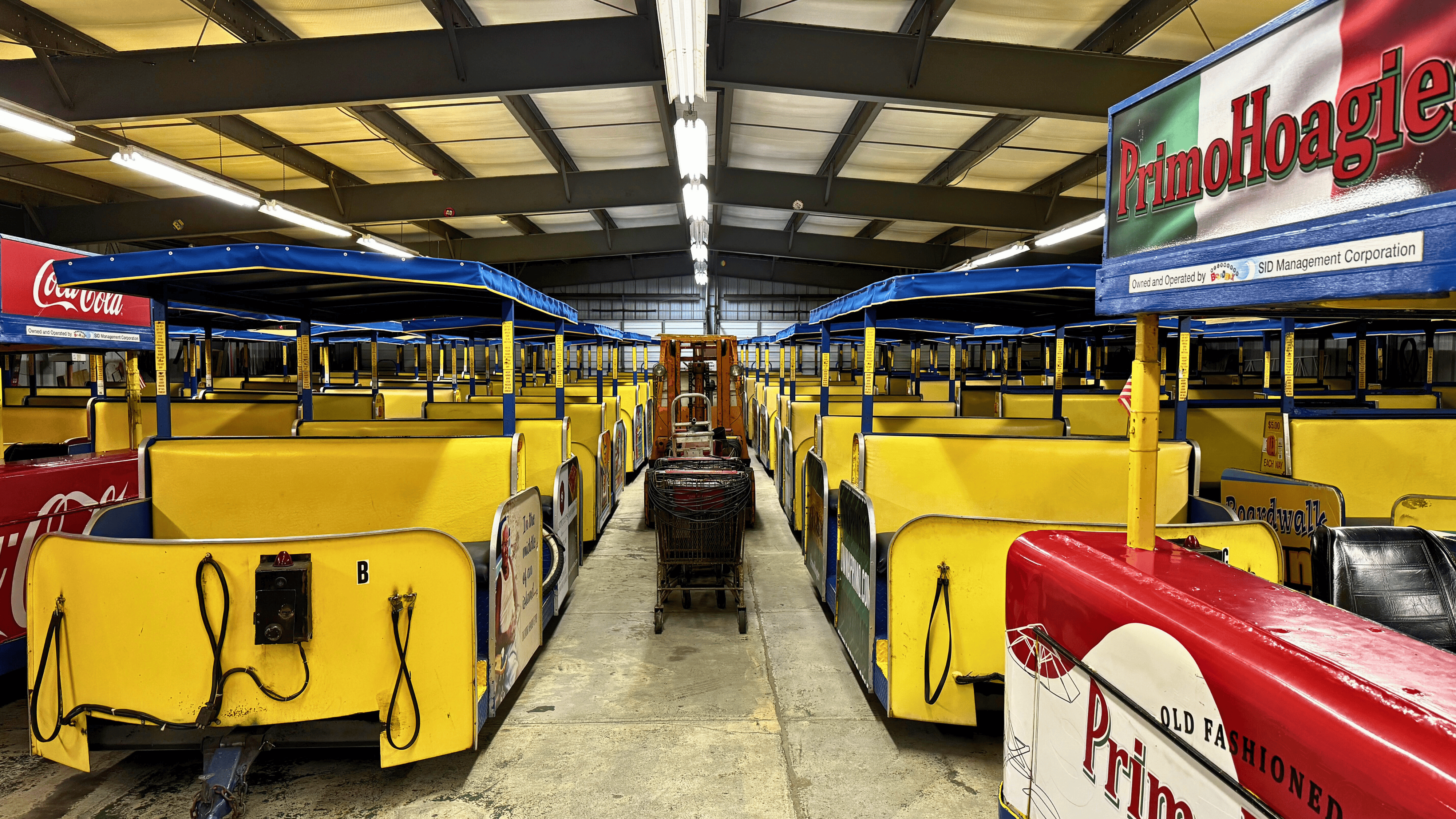
While the price may have changed over time, there are some things about the tramcar that are still the same.
Each tramcar operates on a hefty 36-volt DC battery, tipping the scales at over 2,000 pounds. It was a technology developed decades ago and very revolutionary at the time.
These batteries undergo nightly charging and can sustain operation for approximately seven to eight hours.
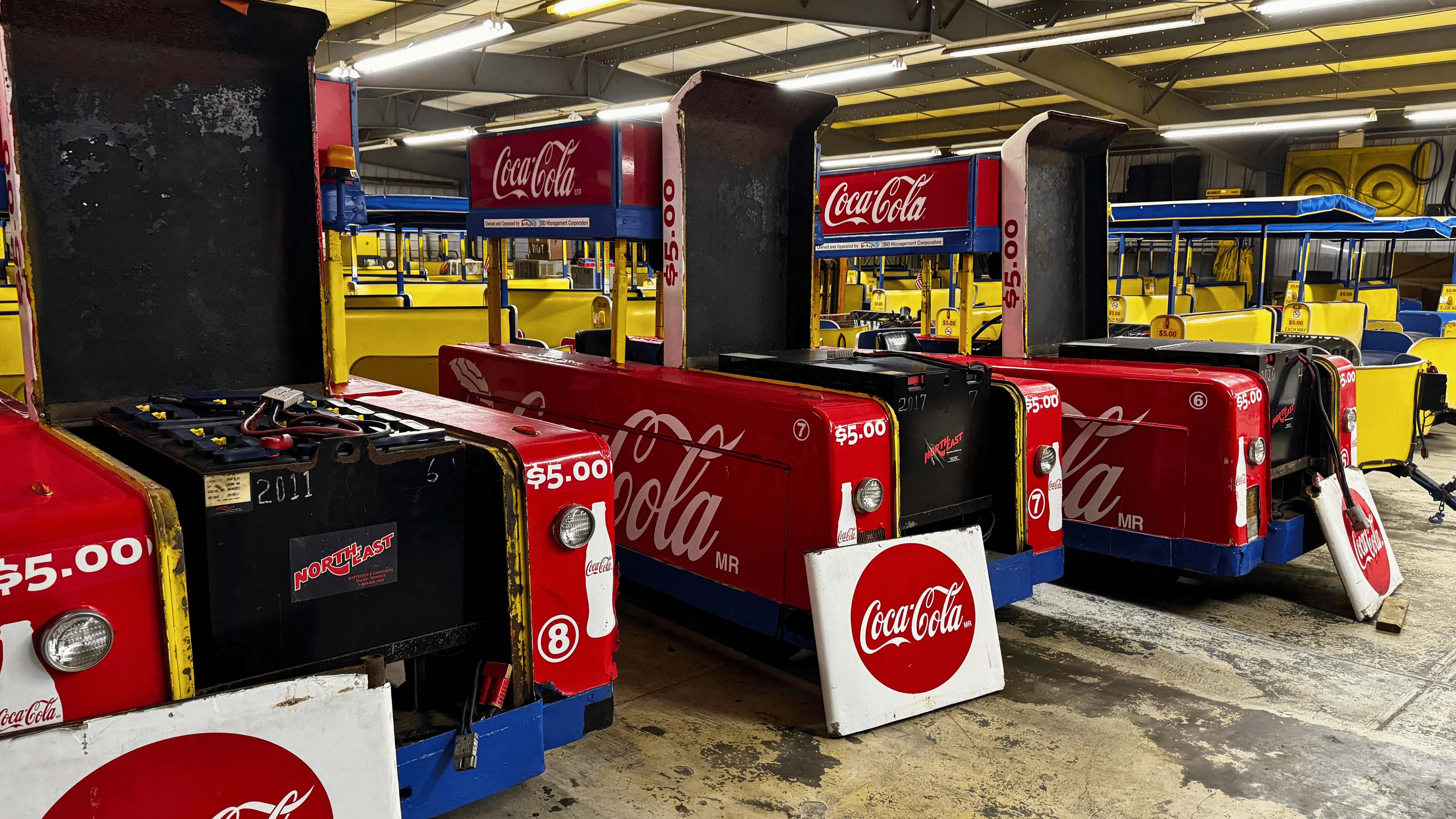
With permission from the WSID, the Wildwood Video Archive got special permission to show viewers where the tramcars sleep.
You can watch that video at the bottom of this article.
The Wildwood Tramcar calls the pier South of Morey’s Surfside Pier home. Visitors have many different names for this pier since over the past few decades it’s been Hunt’s Pier, New Hunt’s Pier, and Dinosaur Beach.
Also See: Wildwood Boardwalk Reconstruction Finished! – Phases 3,4,5
There is a building on that pier that crews use to store the tramcars, perform maintenance on the trams, and charge their batteries.
In the off-season, there is quite a bit of maintenance done on the tramcars. From full inspections to major repairs, it’s this off time that the tramcar gets its tender love and care.
One thing that many people don’t realize is that since the tramcars are electric, crews can’t just shut them off at the end of the season and let them sit.
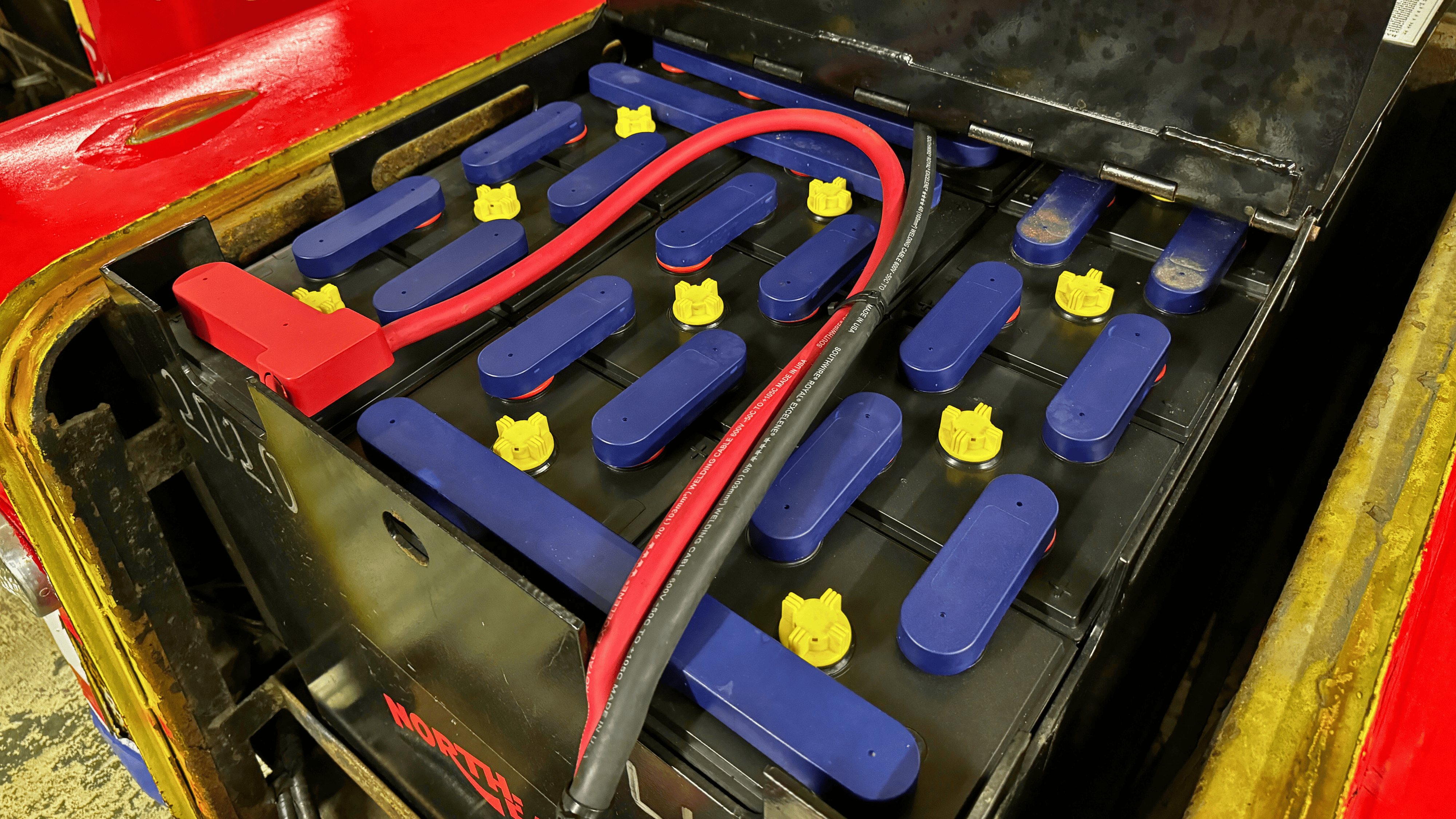
Throughout the off-season, crews have to charge the batteries just enough so that this doesn’t happen.
Crews also do maintenance on these batteries, which are not quite what you think they are.
If you were to remove the hood of the tramcar, you see a massive black metal box. If you were to open that lid you would see what looks to be multiple car batteries wired together to make the 2,000-pound pack.
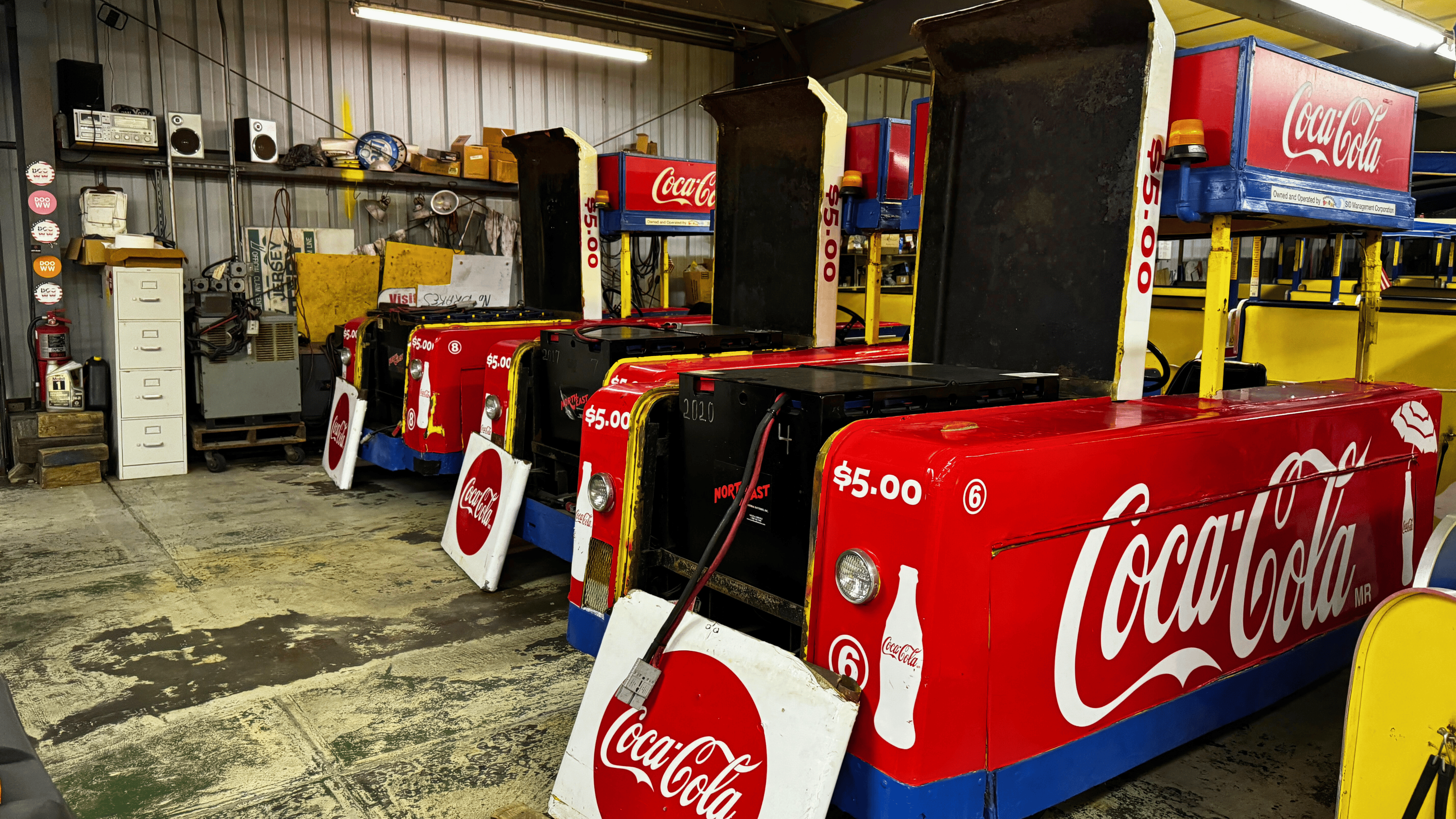
It’s the cost of the older parts and battery pack that make it expensive to operate. That’s why when the two latest trams debuted, Sunny and Gig, they were built to different styles since there were more available parts to keep them going.
In the video below you will see what these tramcars look like in the off-season.
As a disclaimer, visitors as NOT allowed to visit this area as it is private property.
Before you watch our video, please subscribe as we try to hit 100,000 subscribers.
